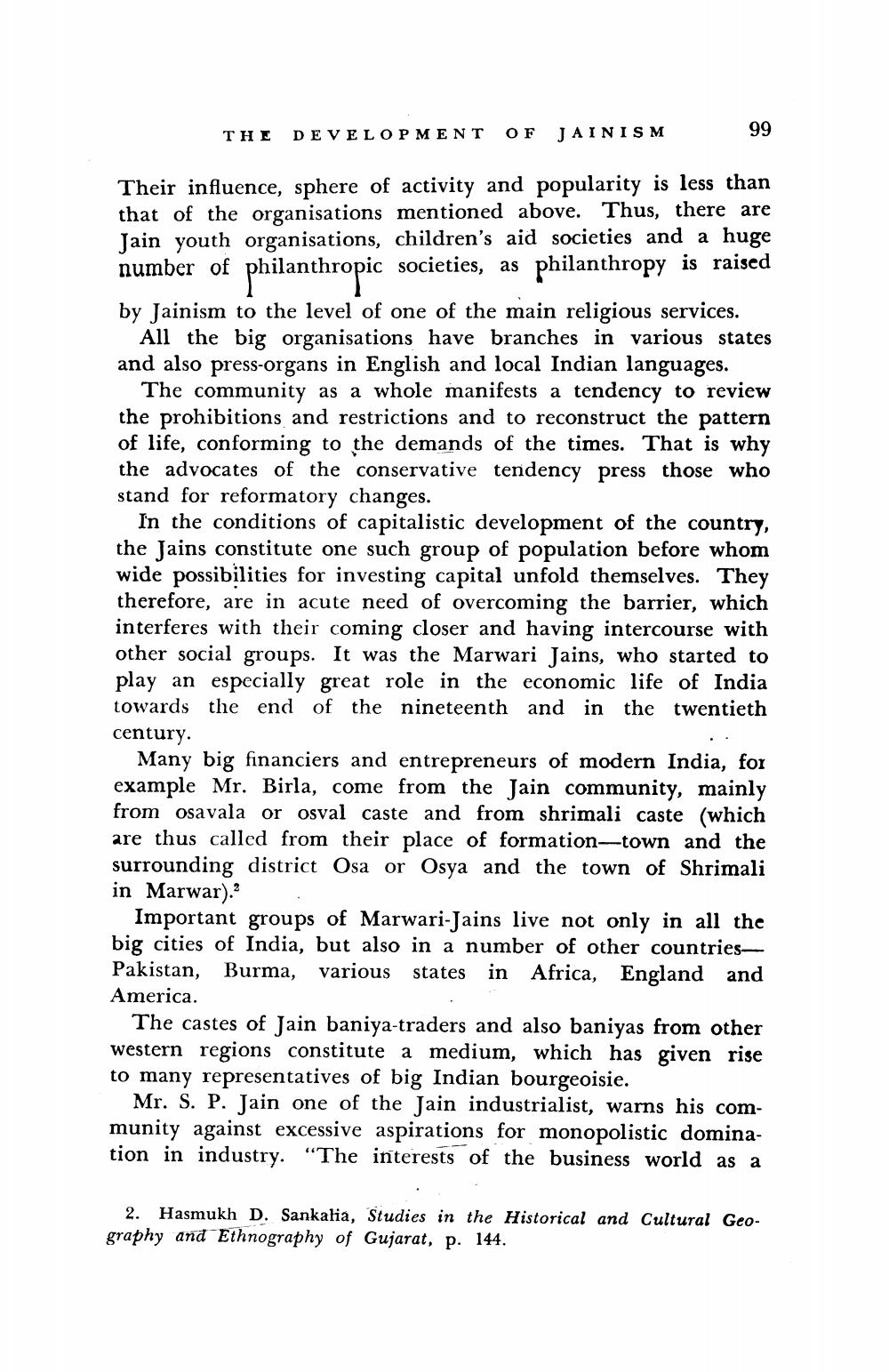________________
99
THE DEVELOPMENT OF JAINISM
Their influence, sphere of activity and popularity is less than that of the organisations mentioned above. Thus, there are Jain youth organisations, children's aid societies and a huge number of philanthropic societies, as philanthropy is raised by Jainism to the level of one of the main religious services.
All the big organisations have branches in various states and also press-organs in English and local Indian languages.
The community as a whole manifests a tendency to review the prohibitions and restrictions and to reconstruct the pattern of life, conforming to the demands of the times. That is why the advocates of the conservative tendency press those who stand for reformatory changes.
In the conditions of capitalistic development of the country, the Jains constitute one such group of population before whom wide possibilities for investing capital unfold themselves. They therefore, are in acute need of overcoming the barrier, which interferes with their coming closer and having intercourse with other social groups. It was the Marwari Jains, who started to play an especially great role in the economic life of India towards the end of the nineteenth and in the twentieth century.
Many big financiers and entrepreneurs of modern India, for example Mr. Birla, come from the Jain community, mainly from osavala or Osval caste and from shrimali caste (which are thus called from their place of formation-town and the surrounding district Osa or Osya and the town of Shrimali in Marwar).
Important groups of Marwari-Jains live not only in all the big cities of India, but also in a number of other countriesPakistan, Burma, various states in Africa, England and America.
The castes of Jain baniya-traders and also baniyas from other western regions constitute a medium, which has given rise to many representatives of big Indian bourgeoisie.
Mr. S. P. Jain one of the Jain industrialist, warns his community against excessive aspirations for monopolistic domination in industry. "The interests of the business world as a
2. Hasmukh D. Sankalia, Studies in the Historical and Cultural Geography and Ethnography of Gujarat, p. 144.




